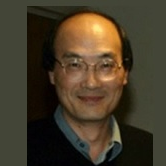Nonequilibrium Quantum Field Processes and Phenomena
A special issue of Entropy (ISSN 1099-4300). This special issue belongs to the section "Non-equilibrium Phenomena".
Deadline for manuscript submissions: 17 September 2024 | Viewed by 5886
Special Issue Editors
Interests: nonequilibrium quantum field theory; relativistic and quantum hydrodynamics; relativistic and quantum kinetic theory; nonequilibrium phenomena in cosmology; quantum thermodynamics, including quantum work relations and quantum engines
Special Issues, Collections and Topics in MDPI journals
Interests: general relativity and quantum field theory; early universe cosmology; nonequilibrium statistical physics; open quantum systems; quantum information
Special Issue Information
Dear Colleagues,
Nature is fundamentally quantum, and all dynamical processes in Nature are intrinsically nonequilibrium, notwithstanding the equilibrium condition being an important approximation. The advent of nonequilibrium quantum field theory in the 80s benefited from the establishment of formal theories of nonequilibrium statistical mechanics in the 50s, and advances in quantum field theory techniques in the 60s and 70s. Since then, this new field has encompassed an expanding horizon of frontier research topics, from cold atom, condensed matter, nuclear-particle physics to gravitation and cosmology. Enriched by rapid developments in the theory of open quantum systems and ground-breaking nonequilibrium fluctuation theorems, it has been fruitfully applied to a broadening range of issues in quantum foundation, quantum information, holography and quantum gravity. This Special Issue welcomes authors to this exciting field, with either review or research papers.
Prof. Dr. Esteban Calzetta
Prof. Dr. Bei Lok Hu
Guest Editors
Manuscript Submission Information
Manuscripts should be submitted online at www.mdpi.com by registering and logging in to this website. Once you are registered, click here to go to the submission form. Manuscripts can be submitted until the deadline. All submissions that pass pre-check are peer-reviewed. Accepted papers will be published continuously in the journal (as soon as accepted) and will be listed together on the special issue website. Research articles, review articles as well as short communications are invited. For planned papers, a title and short abstract (about 100 words) can be sent to the Editorial Office for announcement on this website.
Submitted manuscripts should not have been published previously, nor be under consideration for publication elsewhere (except conference proceedings papers). All manuscripts are thoroughly refereed through a single-blind peer-review process. A guide for authors and other relevant information for submission of manuscripts is available on the Instructions for Authors page. Entropy is an international peer-reviewed open access monthly journal published by MDPI.
Please visit the Instructions for Authors page before submitting a manuscript. The Article Processing Charge (APC) for publication in this open access journal is 2600 CHF (Swiss Francs). Submitted papers should be well formatted and use good English. Authors may use MDPI's English editing service prior to publication or during author revisions.
Keywords
- nonequilibrium quantum field theory
- open quantum systems
- quantum thermodynamics
- quantum information
- atom/nuclear/particle many-body dynamics
- cosmology
- nonequilibrium fluctuation theorems
- fluctuation-induced phenomena
- dynamical Casimir effect
- quantum friction







